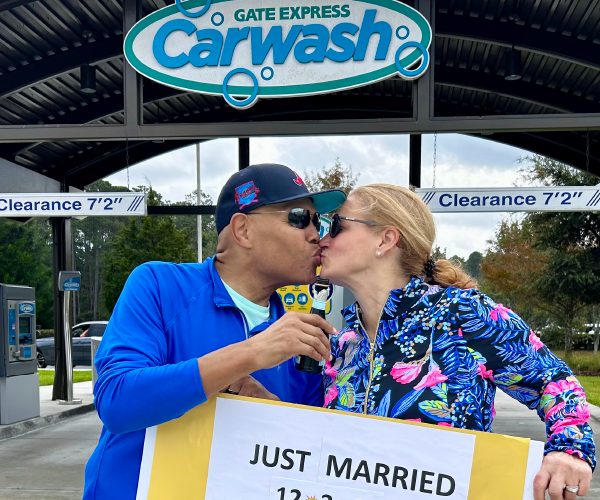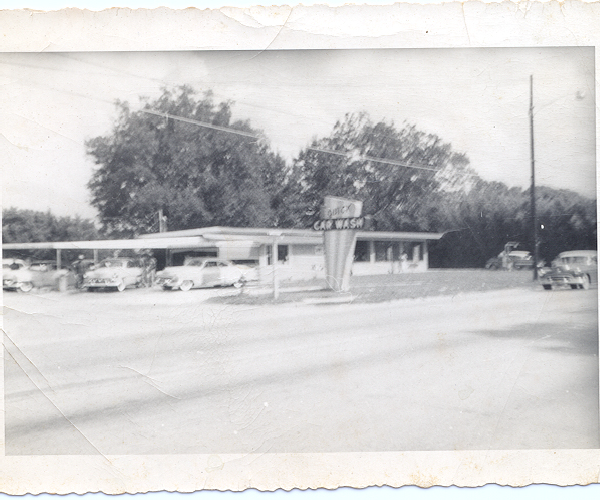
The Power of Customer LTV and Retention
January 18, 2023
10 minute ReadBy Tom Gresham
For years, customer lifetime value was almost a mythical concept, said Peter Fader, author of “Customer Centricity: Focus on the Right Customers for Strategic Advantage.” It was largely aspirational, not something many businesses were able to study and implement into their operations.
Customer lifetime value represents a business’s customer value over the entirety of their relationship. The measurement helps show that increasing the value of your existing customers can help drive growth at a lower cost than acquiring new ones, putting an emphasis on retention and building long-term relationships with high-value customers.
Today, Fader said, customer lifetime value has evolved from concept to practical — from little understood to widely studied.
“The car wash domain represents that evolution so beautifully well — they’ve gone from having no real desire to know who is rolling through their location to building relationships with customers and thinking about how to accommodate different customers in different ways,” said Fader, a professor of marketing at the Wharton School of Business at the University of Pennsylvania.
Fader said in “the old days” of the car wash field — before automation — operators would recognize regular customers and their disproportionately high value to their business. The idea that not all customers are created equal was understood. Operators would provide extra attention and resources for those highly valuable customers — adding extra services or occasional discounts.
“And those high-value customers would really appreciate that stuff,” Fader said. “Then what happened is car washes, like so many other businesses, they opened up the second, third, then fourth locations, and then you lose that intimacy. It just became all about scale, and let’s just push as many people through as we can as cheaply as possible.
“That customer-centric thinking kind of went away. But we’re getting back to it now, and that’s thanks to the data analytics technology. It’s just so easy to tag and track. It’s so easy to set up some kind of subscription program. It’s so easy to set up the [customer relationship management] system, and it’s great to see that that’s becoming just a regular part of the business again. It’s wonderful. Now, how well companies do it and how well they leverage it, there are no guarantees there. But you’re seeing a lot of innovative thinking in the [car wash] space.”
That innovative thinking is essential, Fader said, because not all customers are created equal.
“A few customers bring incredible amounts of your value,” Fader said. “Then it becomes, OK, how do we identify customers like them? How do we add more value to them? How do we extract that value from them? And how do we run our kind of customer acquisition campaigns to acquire more customers like that?”
Embracing the High-frequency ‘Evangelists’
Fader said car washes should understand how to focus their retention and acquisition efforts on the clients with the greatest long-term value.
“The first thing we want to do is to check lifetime value. Before we even are going to interact with someone, you’ve got to ask, is it even worth it?” Fader said. “We have to really understand that those high-value customers are kind of a different breed, and so we kind of need to look at them through a different lens than we look at everybody else.”
In that vein, Michael Stern, vice president of sales for EverWash, said operators too often shy away from high-frequency members who cost the wash more than they pay through their subscriptions.
“When it comes to the data and usage, those are the things that concern a lot of wash operators, but you’re better off capitalizing on [those customers], creating a happy, loyal customer and having them on the program for longer,” Stern said. “By doing that, you create a customer that’s worth more to your business.”
Stern said operators too often miss the influence those high-volume members can have on others — and the insight they offer into identifying other potential highly-engaged members.
“We say embrace that person,” Stern said. “You’re creating an evangelist. You’re creating someone that loves the product and will tell five people a week about your car wash. The way that you treat them can directly correlate to their lifetime value.”
Stern said that highly-engaged members who frequently use a wash are more likely to purchase multiple memberships for a household’s vehicles.
“If you’ve got a household that has four cars, you want all four cars on the plan,” Stern said. “We know that the first car, if it gets washed four times, the second car is going to wash 50% less, and the third car is going to wash 50% less than the second.”
The biggest risk with ignoring customer lifetime value is “the lack of upside,” Fader said.
“You’re just leaving money on the table,” Fader said. “If you plan it right down the middle, and you’re either ignoring who the customers are, or you’re treating them all as if they’re all interchangeable, then you’re underspending and under focusing on those potentially high-value customers. You’re just not making as much money as you could, and you are potentially overspending to get what you’re getting.”
Some businesses emphasize trying to unlock value in their least-valuable customers, seeing the potential room for growth. Fader calls that a mistake.
“If you subscribe to the idea that I’m only as good as my least happy customer — that I need to find those unhappy customers and turn them, that I need to turn those ugly ducklings into beautiful swans — if you subscribe to that idea, which is romantic and sounds very nice, then you’re going to be really inefficient,” Fader said. “Your costs are going to be too high, and it’s going to be frustrating because those people who are coming to your car wash once a year, you’re going to try to get them to come every week. Good luck with that. It sounds nice, but you’re much better off trying to find what makes those once-a-week people different from the once-a-year people and find more like them. Otherwise, you’re just leaving money on the table.”

Influencer Marketing and Customer Lifetime Value
Excellent, personalized service and a consistently excellent experience, of course, are the first steps to retaining customers and building their value.
“You might be able to get someone to buy a package for one month, but if they don’t feel that their car is getting clean, or they don’t feel like the experience is great, they’re gonna leave,” Stern said. “You can’t discount that. You’ve got to have a clean car, and you’ve got to have a good experience. There are a lot of great operators out there who understand that and are creating an experience for their members that connects them to the wash.”
A range of avenues and efforts are available for strengthening that connection. For instance, influencer marketing offers an inroad to increasing customer lifetime value and retention that operators do not always explore.
Micro-influencers and nano-influencers are not just about attracting new members but reactivating existing customers and keeping existing customers happy. Consumers want to buy from someone they trust, even if it’s a brand they’ve bought from before. Influencers often are associated with social media stars, but locally-focused influencers can offer a strong impact in driving engagement with customers.
Mike Berlin, general manager and vice president of sales for Sonny’s Car Wash Marketing, said large social media influencers and the car wash field are not necessarily a great match because a car wash is a business that heavily relies on local connections.
“So, if I hire some famous TikTok star or Instagram influencer to post about my car wash, it’s a lot of wasted energy because we don’t even know if their followers are potential customers,” Berlin said.
However, Berlin said local influencers can be critical to the success of car washes, and making sure that they have unlimited plans can be a highly effective step.
“When we run social media for customers, right out of the gates, we’re making sure we know who the deacons are of the church down the street. We need to know all of our high school football coaches, our principals, the local weather person and the radio DJs. The local influencers,” Berlin said. “It has huge value to making sure that those people that can influence the mindset of people in your neighborhood are excited about the unlimited plan that they have.”
Harriet Ayoade, vice president of marketing for EverWash, said micro-influencers offer more credibility and a better long-term return on investment than many macro-influencers, who cost more money and dilute personal brand credibility.
“With micro-influencers, the people that are connected to them have a stronger relationship with them,” Ayoade said. “The relationships are more tight-knit.”
The trade-off is that you’re reaching a smaller audience with less of a short-term impact.
However, it offers promise over the long term, especially when the micro-influencer continues to support a wash beyond an initial promotion, Ayoade said. New members who come to a wash because of a micro-influencer are higher quality customers than those who originate with a macro-influencer, Ayoade said.
Customers who join a membership because of a micro-influencer with high credibility “are more likely to stay,” she said. “That extends their customer lifetime value over those who join because a celebrity said to.”
In addition, loyalty partners — third-party partners who provide a discount or other incentive to car wash members or other customers — help keep existing customers happy and encourage repeat buying, leading to a higher frequency of purchases.
“Members love the extras and feeling like they’re more than just a customer at a wash when they receive these benefits,” Stern said. “Operators should continue to make sure their customers perceive value in their membership.”
Using Data in Retention
Customer lifetime value is a data value, and data lies at the center of how to build it. Stern said every car wash operator should be looking at data to understand their high-value customers and identify ways to engage their members to increase their lifetime value.
Fader said the challenge of wading through data efficiently and using data for good rather than letting it become a waste of time and resources is of critical importance to increase lifetime value.
“Most of the data that’s available to us is at best nice to know and at worst, downright useless and distracting,” Fader said. “So we need to be much more specific, much more directed. You need to know what you’re looking for, which bits of data to prioritize, what questions to ask, because especially around lifetime value, certain inputs are much more relevant and vital than others.”
Fader said identifying important data for lifetime value can start with the RFM rubric — recency, frequency and monetary value. Ultimately, he said, data that falls into those three categories are the most important — and in that order.
“We can build remarkably accurate predictions about customers using just that kind of data,” Fader said. “It’s the backbone for a lot of companies, like car washes, for instance, and for many companies, I’d say don’t even worry about anything else for a while. Walk before you can run. Once you’ve squeezed out all the value from your RFM data, then we can start to say what’s the next tier of measures you should be looking at. But there’s a lot to do before you even get there.”
Stern said studying data helps car washes increase retention, particularly of high-value customers, by early recognizing when they might be at risk for disengaging from a wash and dropping their membership.
“We can identify risk by a number of different factors,” Stern said. “How often are they going to the wash? Are they opening the communications that we send? Are they referring members? Do they have additional cars? For example, we know that we want members to wash three times in the first month — that’s going to increase their lifetime value. We also know that if you get a customer to add an additional vehicle, then they’re going to be a member 37% longer.”
Ayoade said sometimes operators look too narrowly at data and miss important pieces of context, leading them to draw incorrect conclusions that can lead them astray. In addition, Fader believes too many businesses are “letting the technology get ahead of the practice.” Knowing information does not necessarily lead to acting on it in the best way. In particular, it can lead to over communicating and smothering customers.
“A lot of the kind of personalization we see going on — a lot of the cross-selling and upselling people — is kind of out of hand,” he said.
Still, honing in on the characteristics disproportionately associated with high-value customers and catering to customers based on those findings can pay major dividends, he said.
“Certain products or services, messages, campaigns, even if they’re just a little bit more effective than others at bringing in and keeping high-value customers, it’s very valuable to know it,” Fader said. “Because even if it’s only a little bit more effective, those customers are 100 times more valuable. There’s a big multiplier effect. So, once you know what’s effective, do more of that.”








